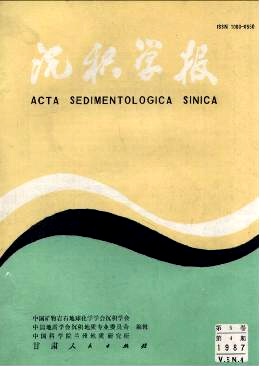THE FORMATION OF SOME TEXTURES OF CARBONATE ROCK IN LOWER PALEOZOIC OF NORTH CHINA
- Received Date: 1985-03-15
- Publish Date: 1987-12-10
Abstract: In recent years, based on the systematically study of more than 3500 samples of Lover Paleozoic carbonate rock of the surface sections and the deep wells of the plain in North China, author found some typical sedimentary textures. They can indicate sedimentary environments, diagenetic history and the important indicators of prospect for minerals. According to the study on the characteristics of minerals forming the textures, the process of intraclasts-forming and the replacements between different minerals, and observation in the fields, the discussions is proposed about the relation between the textures and the sedimentary and/or diagenetic environments in this paper.( 1 ) Indicator of evaporative tidal flat and gypsum deposit; dolomite bearing positiveelongation chalcedonic concretionary gypsum In Linqing area of Shandong, dolomite bearing positive elongation chalcedonic concretionary gypsum was found in drill holes at the stratum bearing gypsum deposit lower part of Lower Majiagou Formation in Ordovician. The environment formed positive elongation chalcedony is dry and evaporative in climate and high in ion concentration and pH value, it is very different from the normal environment formed negative elongation chalcedony. So, if positive elongation chalcedony was found in sedimentary rock we should focus our attention at looking for evaporative beds. As pointed above, positive elongation chalcedony not only can response evaporative tidal flat environment, but also play a indicator in looking for evaporative deposit.(2 ) The significance of psendocrystal of gypsum-type calcite in reflecting environments Based on the systematic observation of pseudocrystal of gypsum-type calcite in the Ordovician carbonate rock of North China, It is pointed out that gypsums were formed in different diagenetical stages. Some were formed in penecontemporaneous or early diagenetic stage. The rest were formed in epigonetic or hypergene stage and have not relation to the sedimentary environments of surrounding rocks. So, the former may be used as the indicator for environments of evaporative tidal flat, but the later cannot be used as indicator facies.( 3 ) The indicator of environment of tidal flat: the high energy oolite with multilayer-film ironstone In the middle part of Xuzhuang Formation of Cambrian in Hongdong of Shanxi and Laiwu Shangdong, there are the deposits of sparry oolite limestone bearing terrigenous grain interbeding with calcareous fine-grained quartzose sandstone. The main composition in this rock is the oolite with special inter-texture of 20-30 fine and closed concentric rings of micritic calcite. There is a very thin layer film of ironstone between the rings. The oolite was formed in the intertidal high energy zone. Owing to rising and falling of tidal water frequently, the oolitic nucleus or immature oolites were deposited and exposed, every new ring of oolites must be oxidized by oxidation and surrounded by a very thin film of ironstone. As the result, the high energy oolite with multilayer-film ironstone is formed. The oolite is a special product of tidal movement in wet and warm climate and is a indicator of tidal sediment and also a important basis for studying the position of ancient coast line. Three types of sedimentary texture mentioned above all were formed in special sedimentary or diagenetic environments. Studying these textures is important not only in the theory of sedimentology, but also in the exploration of sedimentary mineral product.
| Citation: | Xu Hui. THE FORMATION OF SOME TEXTURES OF CARBONATE ROCK IN LOWER PALEOZOIC OF NORTH CHINA[J]. Acta Sedimentologica Sinica, 1987, 5(4): 90-95. |






 DownLoad:
DownLoad: